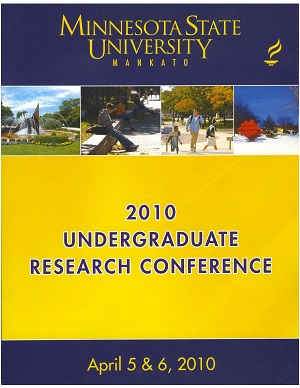Patrons and Pilgrims of Sanchi: A Universal Site for a Universal Audience
Location
CSU 201
Start Date
6-4-2010 8:00 AM
End Date
6-4-2010 10:00 AM
Student's Major
Art
Student's College
Arts and Humanities
Mentor's Name
Alisa Eimen
Mentor's Department
Art
Mentor's College
Arts and Humanities
Description
This paper focused on the Great Stupa at Sanchi as a central pilgrimage site with universal imagery that would have meaning not only to Buddhist pilgrims in India, but also to the Hindu pilgrims visiting Sanchi and other similar sites. It dealt with the significance of pilgrimage within India and looked at the tolerant coexistence of Hindu and Buddhist followers in 1st century India. It is imperative to how we perceive the current climate of India. Many people believe that current intolerance is founded on a past of intolerance. This research sought to disprove that idea and to give a better history of India’s interrelations. In approximately the fifth century BCE, Stupas began as earthen mounds in which relics from the Buddha’s cremated remains were placed. Over time, stupas developed into much more symbolic sites rather than actual reliquaries. Stupas are large, hemispherical mounds surrounded by railings, which guide the worshiper around the structure. The practice of ritual circumambulation is enacted in remembrance of the Buddha and in meditation on his teachings. The four gateways and railings surrounding the stupa are covered in relief carvings that depict stories of his many lives, some of which are similar to Aesop’s tales. I examined the structure at Sanchi with special interested in the relief carvings on the gateways that depict Buddhist stories along with the Hindu influences on the imagery. I also looked carefully at inscriptions, which indicated patronage and pilgrimage in order to show cross-religious relations in ancient India.
Patrons and Pilgrims of Sanchi: A Universal Site for a Universal Audience
CSU 201
This paper focused on the Great Stupa at Sanchi as a central pilgrimage site with universal imagery that would have meaning not only to Buddhist pilgrims in India, but also to the Hindu pilgrims visiting Sanchi and other similar sites. It dealt with the significance of pilgrimage within India and looked at the tolerant coexistence of Hindu and Buddhist followers in 1st century India. It is imperative to how we perceive the current climate of India. Many people believe that current intolerance is founded on a past of intolerance. This research sought to disprove that idea and to give a better history of India’s interrelations. In approximately the fifth century BCE, Stupas began as earthen mounds in which relics from the Buddha’s cremated remains were placed. Over time, stupas developed into much more symbolic sites rather than actual reliquaries. Stupas are large, hemispherical mounds surrounded by railings, which guide the worshiper around the structure. The practice of ritual circumambulation is enacted in remembrance of the Buddha and in meditation on his teachings. The four gateways and railings surrounding the stupa are covered in relief carvings that depict stories of his many lives, some of which are similar to Aesop’s tales. I examined the structure at Sanchi with special interested in the relief carvings on the gateways that depict Buddhist stories along with the Hindu influences on the imagery. I also looked carefully at inscriptions, which indicated patronage and pilgrimage in order to show cross-religious relations in ancient India.
Recommended Citation
Phillips, Amber E.. "Patrons and Pilgrims of Sanchi: A Universal Site for a Universal Audience." Undergraduate Research Symposium, Mankato, MN, April 6, 2010.
https://cornerstone.lib.mnsu.edu/urs/2010/oral-session-08/3



